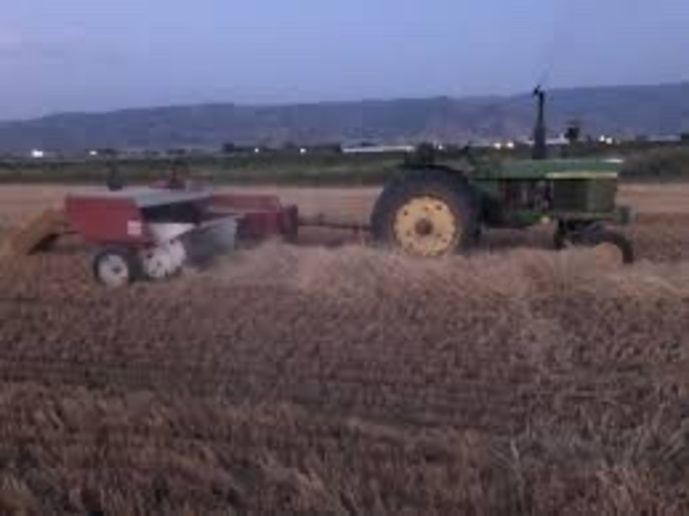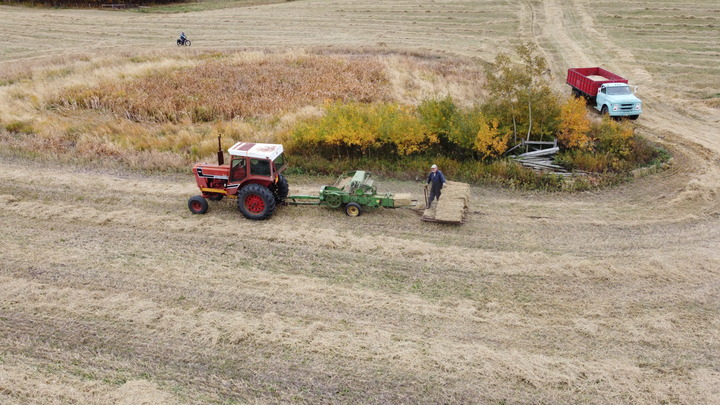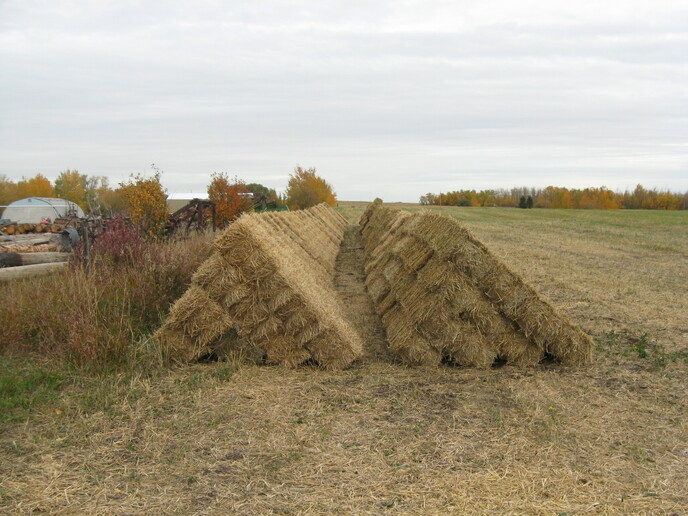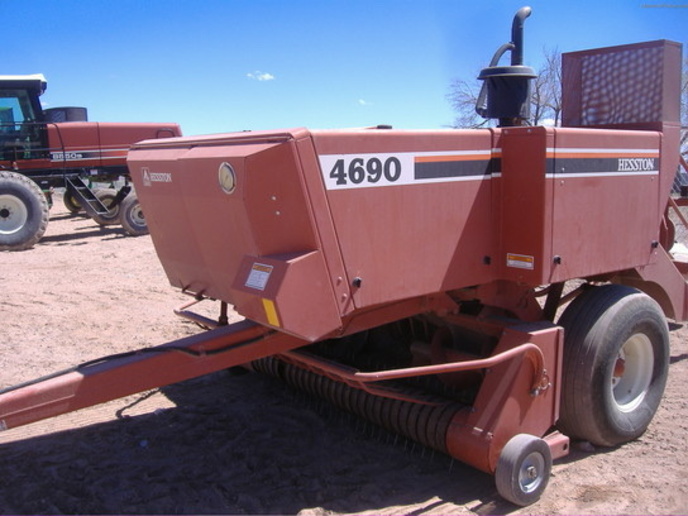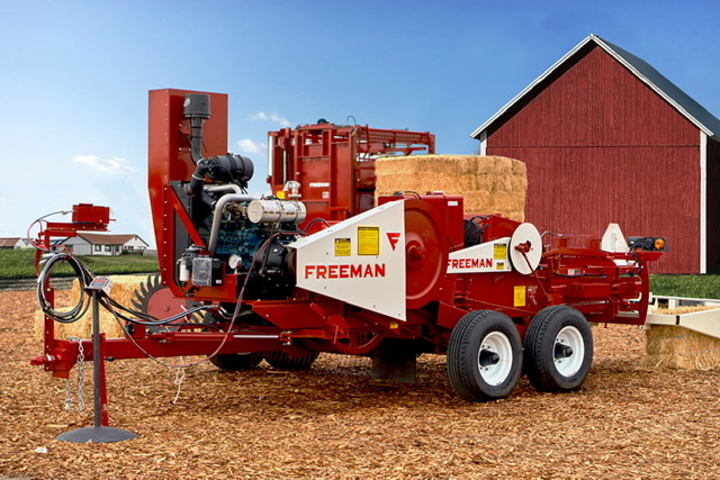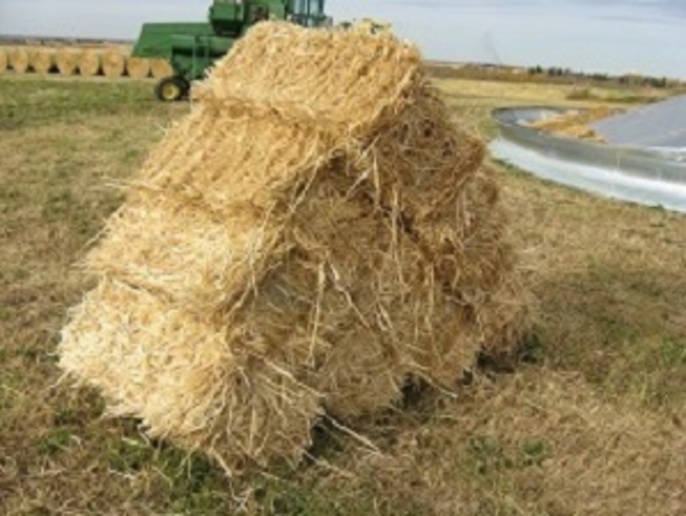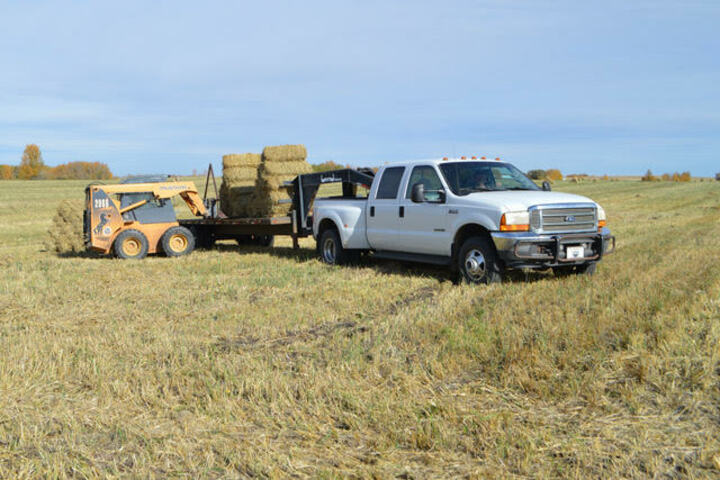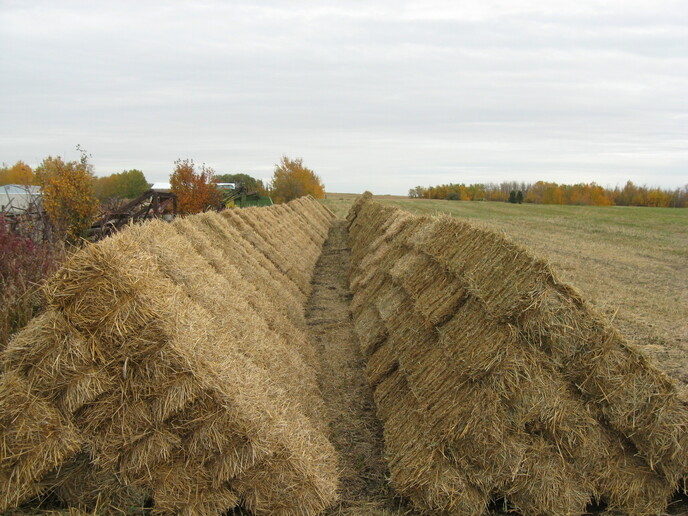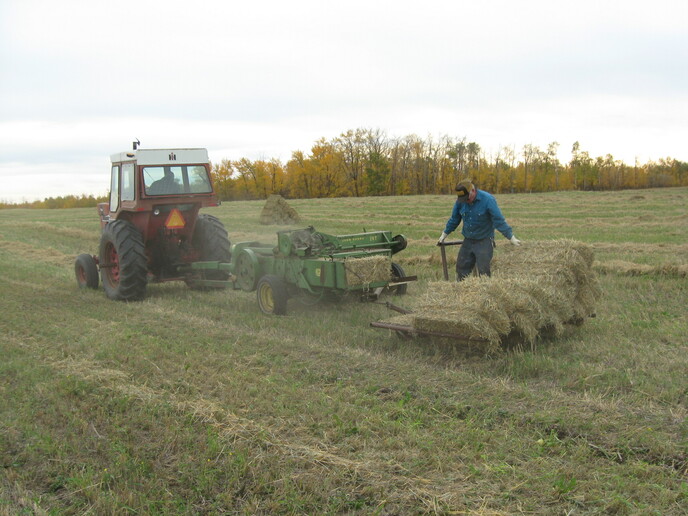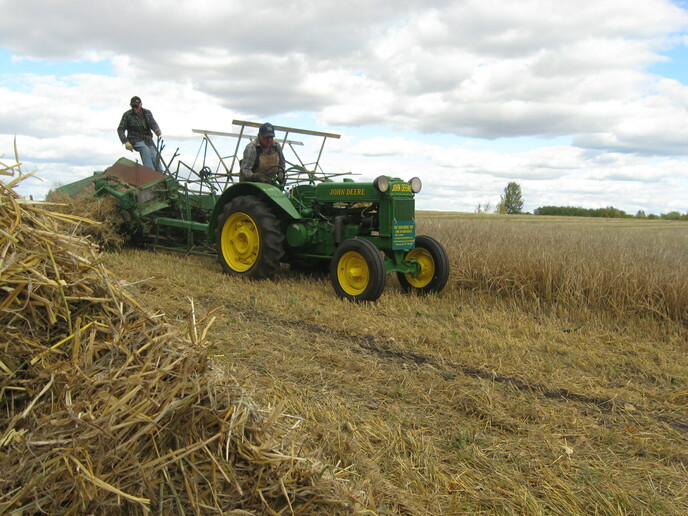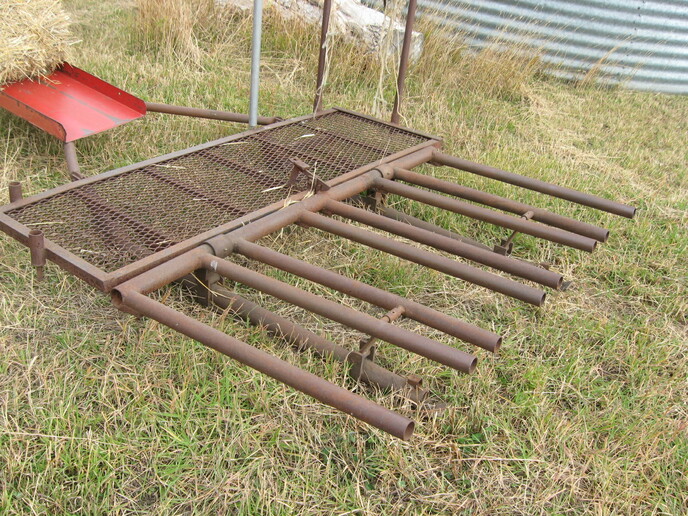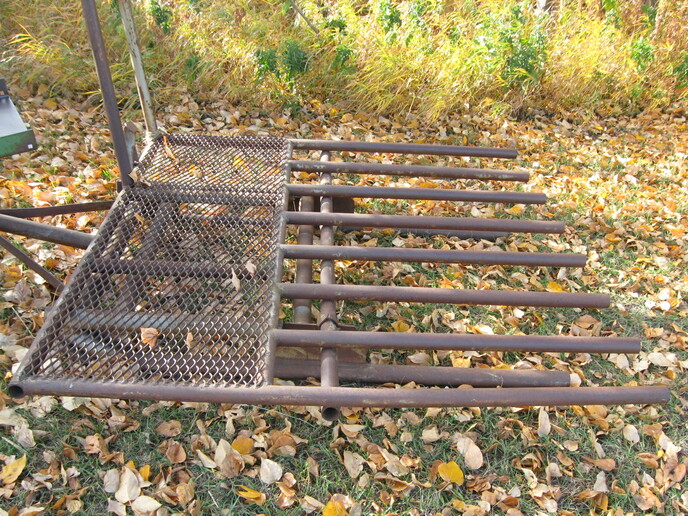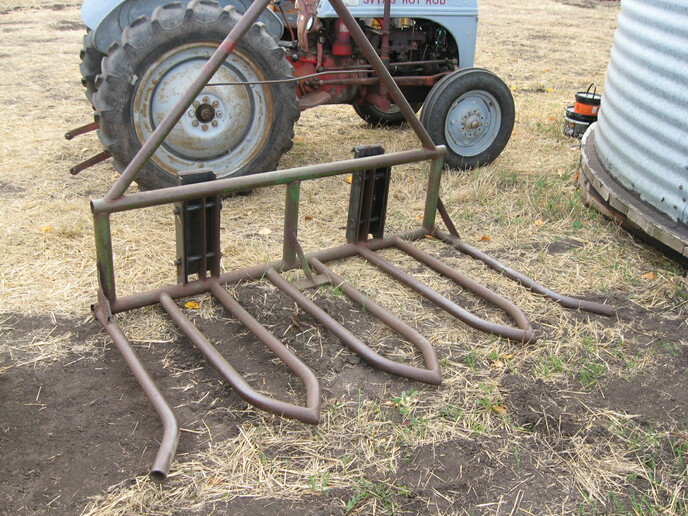I took some photos Willy, we have two of these sleds. Both are built on what you might call sled runners or skids. They both work the same way. Once the ten bales are in place and stacked on the back trailing forks, the operator trips a pedal and the bales (with their heavy weight) tip the forks and bales backwards. The bottom edge of the four bottom bales of the stook grab the ground, the sled keeps moving forward, the stook settles and is left behind upright (hopefully). The forks return back to level and it starts all over again. Although similar, both designs are a bit different.
In the first photo below, this design has the operator platform sort of 'separate' from the back forks (which are hinged). The operator platform stays level at all times (never tilts) and when the operator trips the trigger pedal (you can see it behind where he stands), just the back half of the sled (with the 10 bales) tips backwards. The back edge of the bottom 4 bales grab the ground, the sled keeps moving forward and the entire stook is left behind and it settles upright. A heavy spring returns the back forks back level and the back forks lock into place (foot off the pedal) and the stacking starts again.
In the second photo below, it works in a very similar manner BUT the whole operator platform and rear forks are one solid unit (not separate parts like the first design). When the forks are full with ten bales, the operator grabs the safety rail and steps on a pedal (which is positioned in front of him) which causes the whole thing to tilt (operators platform with operator, plus the rear forks and stooks. After the stook leaves the sled and stays behind, the weight of the operator brings the whole platform & forks back level and it locks in place (operator's foot off the pedal of course).
You'll notice that the back forks on both have 8 pipes, the two designs have a bit different spacing positioning between the pipes but they work exactly the same, four bales on the first row of bales at the bottom, each sitting on an angle
I've got some more photos here but those I could email to you. If you email me at ....
[email protected] ..... I can send some more photos back in a reply with some more comments. I also have some basic measurements.
The THIRD photo is a loader frame which attaches to a loader on a tractor or skid steer. It picks up all ten bales at once to move them for storage or to stack them on a flatdeck trailer for transport, etc.


